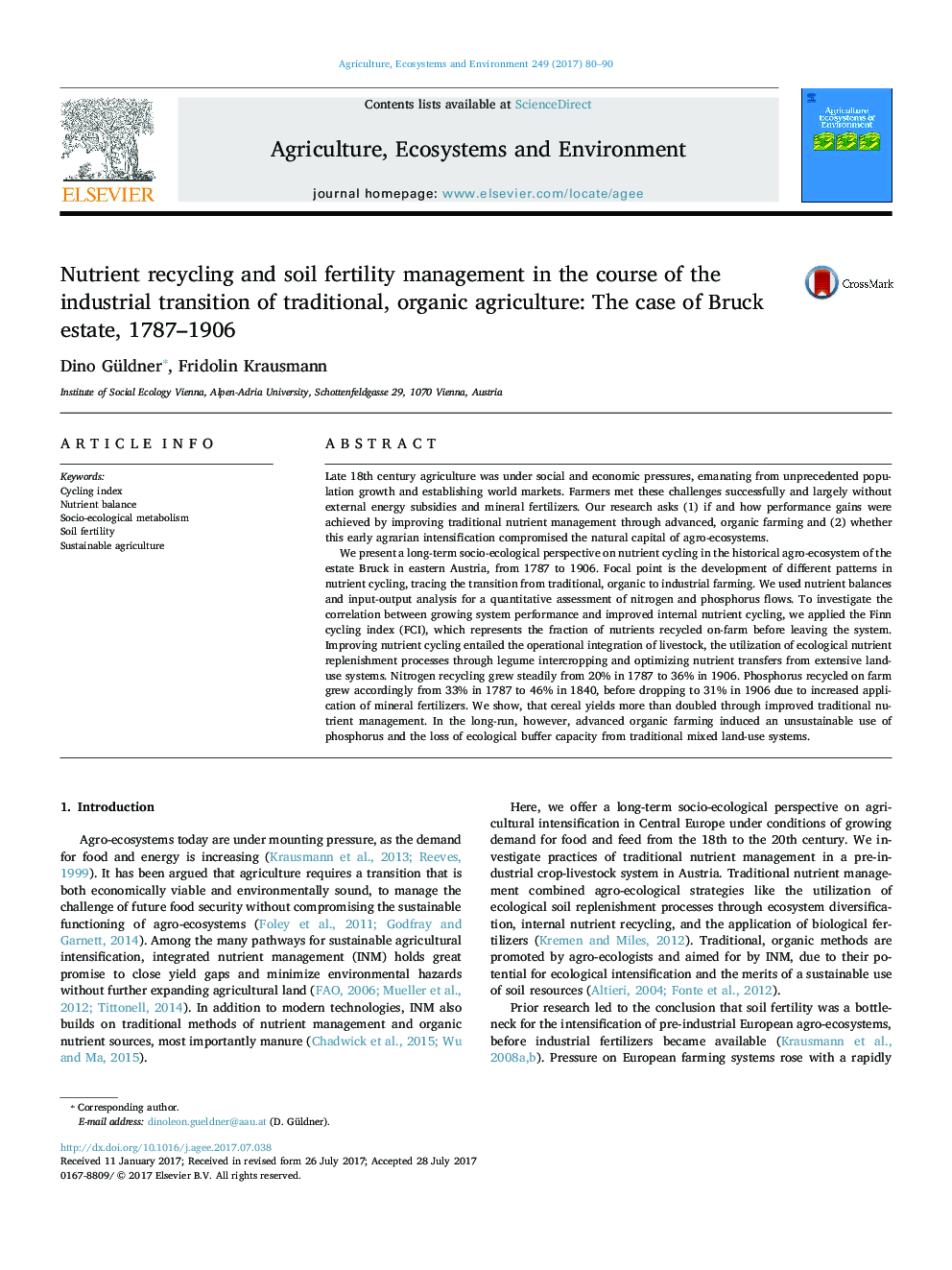| Article ID | Journal | Published Year | Pages | File Type |
|---|---|---|---|---|
| 5538192 | Agriculture, Ecosystems & Environment | 2017 | 11 Pages |
Abstract
We present a long-term socio-ecological perspective on nutrient cycling in the historical agro-ecosystem of the estate Bruck in eastern Austria, from 1787 to 1906. Focal point is the development of different patterns in nutrient cycling, tracing the transition from traditional, organic to industrial farming. We used nutrient balances and input-output analysis for a quantitative assessment of nitrogen and phosphorus flows. To investigate the correlation between growing system performance and improved internal nutrient cycling, we applied the Finn cycling index (FCI), which represents the fraction of nutrients recycled on-farm before leaving the system. Improving nutrient cycling entailed the operational integration of livestock, the utilization of ecological nutrient replenishment processes through legume intercropping and optimizing nutrient transfers from extensive land-use systems. Nitrogen recycling grew steadily from 20% in 1787 to 36% in 1906. Phosphorus recycled on farm grew accordingly from 33% in 1787 to 46% in 1840, before dropping to 31% in 1906 due to increased application of mineral fertilizers. We show, that cereal yields more than doubled through improved traditional nutrient management. In the long-run, however, advanced organic farming induced an unsustainable use of phosphorus and the loss of ecological buffer capacity from traditional mixed land-use systems.
Related Topics
Life Sciences
Agricultural and Biological Sciences
Agronomy and Crop Science
Authors
Dino Güldner, Fridolin Krausmann,
